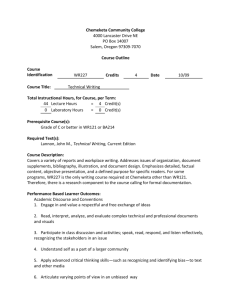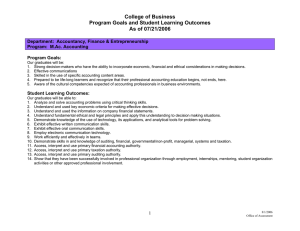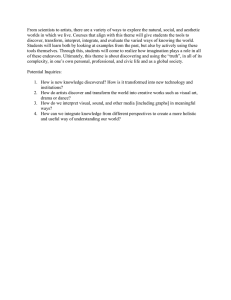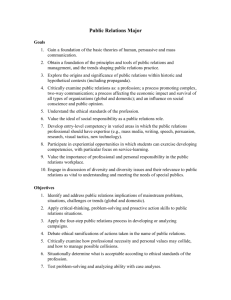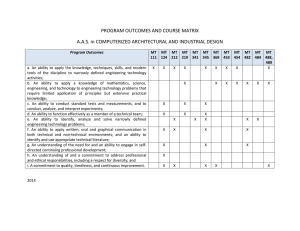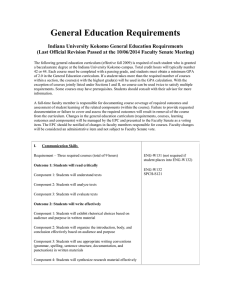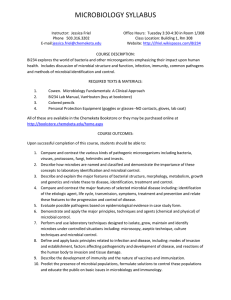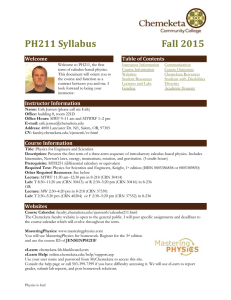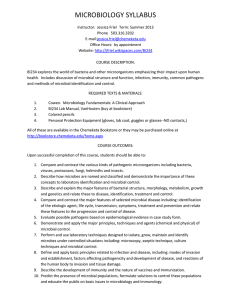Technical Writing - Chemeketa Library
advertisement
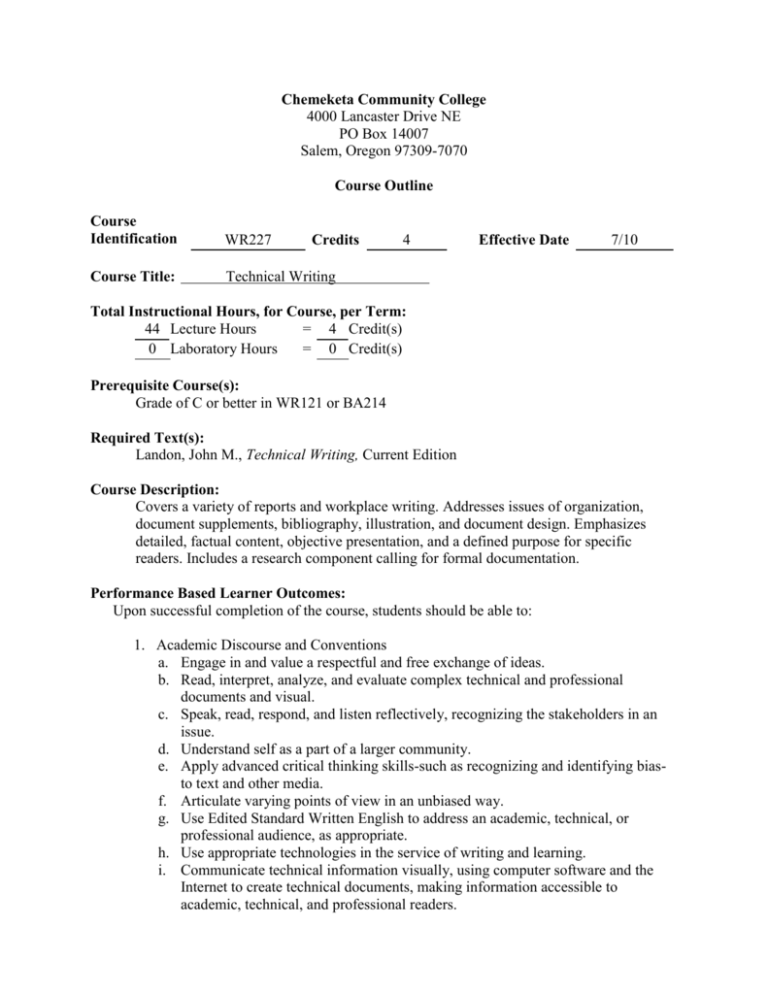
Chemeketa Community College 4000 Lancaster Drive NE PO Box 14007 Salem, Oregon 97309-7070 Course Outline Course Identification WR227 Course Title: Technical Writing Credits 4 Effective Date 7/10 Total Instructional Hours, for Course, per Term: 44 Lecture Hours = 4 Credit(s) 0 Laboratory Hours = 0 Credit(s) Prerequisite Course(s): Grade of C or better in WR121 or BA214 Required Text(s): Landon, John M., Technical Writing, Current Edition Course Description: Covers a variety of reports and workplace writing. Addresses issues of organization, document supplements, bibliography, illustration, and document design. Emphasizes detailed, factual content, objective presentation, and a defined purpose for specific readers. Includes a research component calling for formal documentation. Performance Based Learner Outcomes: Upon successful completion of the course, students should be able to: 1. Academic Discourse and Conventions a. Engage in and value a respectful and free exchange of ideas. b. Read, interpret, analyze, and evaluate complex technical and professional documents and visual. c. Speak, read, respond, and listen reflectively, recognizing the stakeholders in an issue. d. Understand self as a part of a larger community. e. Apply advanced critical thinking skills-such as recognizing and identifying biasto text and other media. f. Articulate varying points of view in an unbiased way. g. Use Edited Standard Written English to address an academic, technical, or professional audience, as appropriate. h. Use appropriate technologies in the service of writing and learning. i. Communicate technical information visually, using computer software and the Internet to create technical documents, making information accessible to academic, technical, and professional readers. Course Outline WR227 Page 2 2. 3. 4. 5. j. Use a writer’s handbook and/or other resources to guide style, grammar, citation, layout, and documentation. Organization, Thesis, and Development a. Write documents with effective focus, organization, accuracy, and logical development of ideas. b. Read, interpret, select, and use technical and statistical information appropriately. c. Design and produce documents that include visuals, with accurate, ethical, and accessible content adapted to the knowledge level of intended audiences. Audience, Purpose, and Voice a. Choose appropriate format and document design for the purpose and intended audience. b. Distinguish among and apply a variety of technical writing techniques that relate to content, document layout, graphics, and research. c. Consider ethical implications of technical and professional communication. d. Demonstrate proficiency in accuracy, brevity, and clarity of content development. e. Design and produce communications specifically tailored to a number of different audiences with diverse educational, cultural, and linguistic backgrounds. Writing Process a. Explore the ideas of others in both informal and formal writing. b. Serve as a member of a team that is capable of making decisions about what makes a quality report, form its inception to its completion. c. Design and produce technical and professional communications through a flexible process of invention, drafting, revision, editing, and proofreading. d. Supplement written content with graphics such as tables, figures, charts, and other visual aids. e. Appraise personal writing skills, writing processes, and abilities. f. Provide feedback on peers’ drafts; revise written work based on peer and instructor feedback to achieve clarity, coherence, and effectiveness. g. Create a large-scale technical writing project that demonstrates an ability to synthesize and integrate ideas and source material, being careful to differentiate source materials from their (the students’) own ideas. h. Use available writing support, such as the Chemeketa Writing Center, the Tutoring Center, the reference librarians, etc. Research and Documentation a. Use library resources, online databases, the Internet, professional and trade organizations, and field research to locate information and evidence. b. Use some advanced research techniques to locate sources. c. Record and organize information resources to track the research process. d. Evaluate information for authority, currency, reliability, bias, sound reasoning, validity, and adequacy of evidence. e. Select, interpret, and use technical and statistical information appropriately. f. Summarize, paraphrase, and quote sources in a manner that distinguishes the writer’s voice from that of resource material. Course Outline WR227 Page 3 g. Integrate research and documentation to support report content by correctly using a discipline-appropriate documentation style. Course Content Outline: I. Introduction to Technical Writing A. Definition of technical writing B. Objectivity versus subjectivity C. Ethical considerations D. Practicality – essential, accurate, timely information E. Purpose: information, recommendation, instruction, definition, process analysis F. Collaboration G. Document design and format II. Document Design and Usability – Making Effective Use A. Computer technology B. Specific, concise language C. Lists (bullets, numbers) D. Parallel constructions E. Appropriate diction F. Organizational and sequencing techniques G. Visual elements (tables, figures) III. Avoiding Common Technical Writing Errors A. Ambiguity B. Redundancies C. Offensive or inappropriate usage IV. Report Writing A. Instructions, narration, process B. Description C. Definition D. Summaries/abstracts E. Proposals/feasibility studies F. Research with documentation G. Laboratory reports H. Formal I. Informal 1. Memoranda 2. Miscellaneous reportage V. Research and Information Literacy A. Determine nature and extent of information needed B. Access relevant information (print and electronic) C. Evaluate information and its sources D. Integrate research with appropriate documentation
